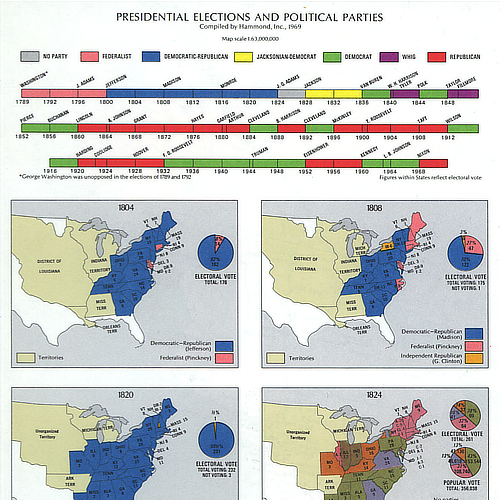Analyzing Primary Sources: Political Parties

In a fantastic series of posts on the Teaching with the Library blog, Educational Resources Specialist Colleen Call Smith details a number of different ways to dig into the Library’s Political Parties primary source set.
Political Parties and Primary Sources: Civic Participation
Consider ways in which oral histories provide a unique source for thinking about civic participation.
Political Parties and Primary Sources: Fostering Student Inquiry
Discover how to break up a primary source into component parts to facilitate inquiry and analysis.
Primary Sources and Political Parties: Reading Complex Texts
Uncover a number of methods for facilitating analysis of complex texts, including:
- determining the central idea and how an idea develops over the course of a text
- determining an author’s point of view
- determining theme, purpose, and rhetorical features
- examining claims and evidence
Primary Sources and Political Parties: The Role of Third Parties
Access an outline for helping students consider the various roles that third parties have played in U.S. history.
Primary Sources and Political Parties: Ten Ideas for Teaching with Graphs and Maps
Learn how maps can help students discover trends and patterns in presidential elections.
Related resources
- Analyzing Primary Sources: Technology & Presidential Nominating Conventions
- Guided Primary Source Analysis: Presenting Party Platforms
- Guided Primary Source Analysis: Massachusetts Did It
- Guided Primary Source Analysis: Taft About to Eclipse Bryan
- Today in History: Progressive/Bull Moose Party
- Today in History: Political Debates
- Primary Source Learning: U.S. President lessons, analysis activities & more
- Primary Source Spotlight: U.S. Presidents
